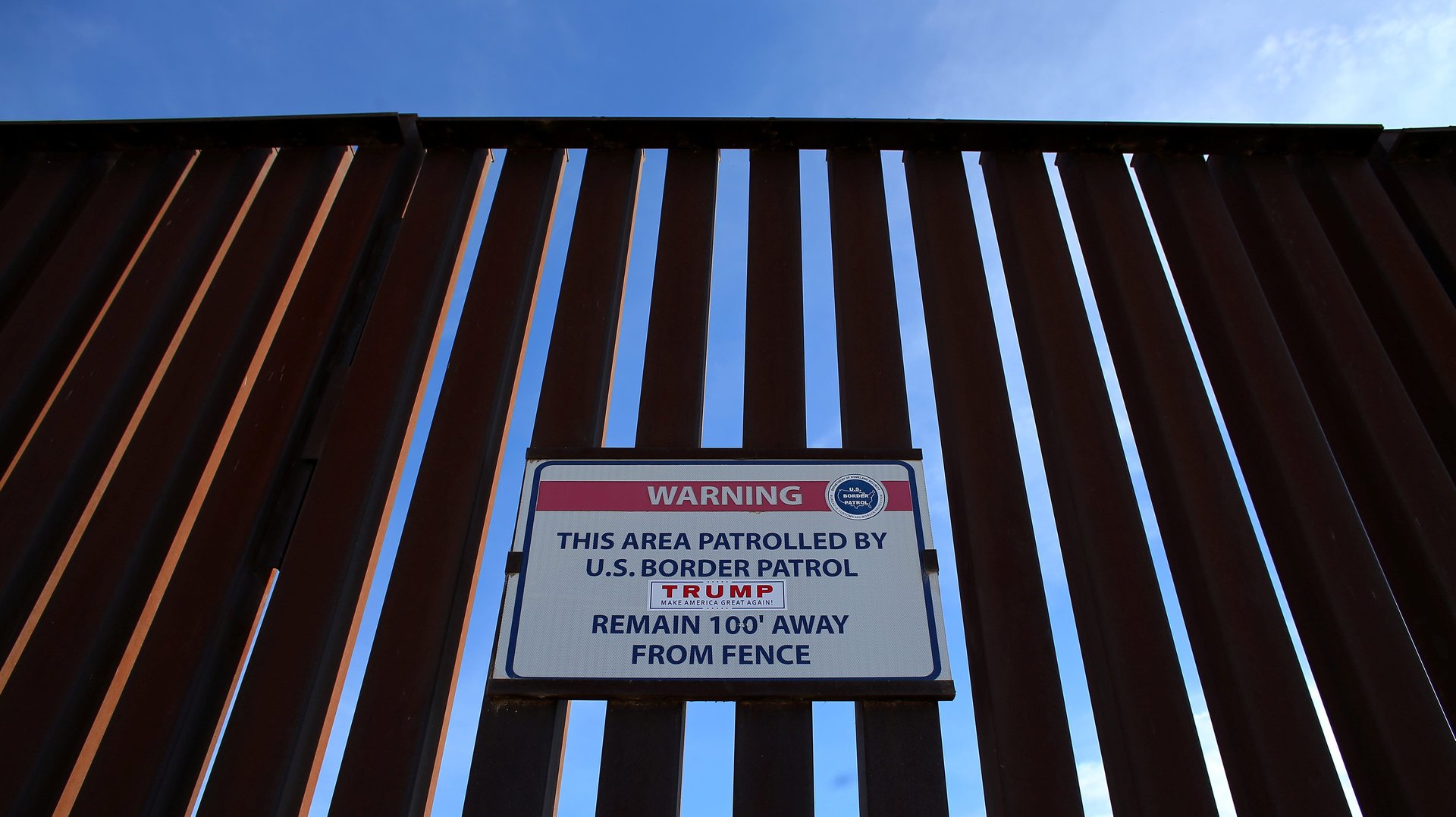Trump’s new immigration rules are almost as far-fetched as his border wall
The US Department of Homeland Security issued two new memos that flesh out how it will carry out US president Donald Trump’s crackdown on illegal immigration.


The US Department of Homeland Security issued two new memos that flesh out how it will carry out US president Donald Trump’s crackdown on illegal immigration.
Like Trump’s border wall proposal, they are rooted in a harsher view of immigrants and how they should be treated. And like the wall, they raise many questions about the practicalities of how they could ever be feasibly carried out.
Nevertheless, though it will take some time to implement some of Trump’s policies, and some may never see the light of day, some of them, including a broader mandate for deportations, are already having a very real and immediate effect on immigrants.
The new rules are designed to enact Trump’s previously issued executive orders. They include a directive to ship immigrants to Mexico even if they have a pending legal appeal, a less generous interpretation of who qualifies as an unaccompanied minor (a category eligible for special protections under the Obama administration), and a call to hold more immigrants in detention, among many others.
Experts are still analyzing their effects, but they are already pointing to potential obstacles that could derail, or at the very least, stall Trump’s gung-ho immigration agenda. The department of homeland security (DHS) seems to recognize some of the challenges in enforcing the new rules in a series of factsheets it released to explain the new policies.
Back to Mexico
In one of the biggest policy changes, DHS said it will return immigrants who are in the process of removal proceedings to the “foreign contiguous territory from which they arrived.” That means that instead of waiting out the process in the US, those who cross the southern US border would be sent to Mexico—regardless of their nationality.
The rationale behind the move is to free up resources for the agency to deal with higher-priority immigrants in the US. But there are several hitches: Under international law, the US can’t deport someone who is eligible for asylum, said William Holston Jr., executive director of the Human Rights Initiative of North Texas, a group that helps victims of violence from around the world.
In order for the plan to work, it would also require some degree of cooperation from the Mexican authorities Trump has repeatedly antagonized. The memo says that there would be some kind of facility set up south of the border so that the proceedings could be carried out remotely via teleconference. In a Q&A on the new policy, the department of homeland security said it was working with the Mexican government, but provided no other details.
The memo itself seems to address these legal and practical caveats, saying the policy will be applied “consistent with the law and U.S. international treaty obligations” and to “to the extent appropriate and reasonably practicable.”
What might happen in practice, says Sarah Pierce, an immigration expert at the Migration Policy Institute, is that the new rule won’t be applied to large numbers of people.
Ramped-up detention
The new guidelines also call for an end to the practice known as “catch-and-release,” which allowed certain immigrants to be released from custody while their removal proceedings were pending. Such a move will require the government to significantly expand available detention facilities, which are already crowded. It will be an expensive process and won’t happen overnight. DHS itself acknowledged in its clarification of the policy that the space “may be limited at times.” So, as of now, US Immigration and Customs Enforcement, or ICE, is going to have to prioritize who gets held.
The expanded use of detention is likely to face legal challenges, as it did under the Obama administration, when DHS decided to keep women and children in holding facilities. Expect more lawsuits on this and other aspects of the new rules.
“President Trump does not have the last word here—the courts and the public will not allow this un-American dream to become reality,” said Omar Jadwat, director of the ACLU’s Immigrants’ Rights Project, in a statement.
More agents
Trump’s call for more border patrol and ICE agents could also take a while to materialize. John Roth, the agency’s inspector general, recently told a congressional committee that it takes nine months on average to fill a border patrol agent position. Part of the problem, he said, is that DHS’s human resources department is understaffed and doesn’t have a good system to track applications.
Then there’s the issue of how to pay those employees after they get hired. Sarah Saldaña, ICE’s former chief, recently told the Dallas Morning News that her budget was already stretched to the limit just trying to fulfill the the Obama administration’s less ambitious goals. “I am not saying you shouldn’t have 10,000 more,” she said referring to the number of ICE agents Trump wants to add. “I just don’t know where the money will come to fund them.”
DHS was short on details on how it would roll out that part of Trump’s executive order. “ICE is working on implementing a hiring plan,” it said in its Q&A.